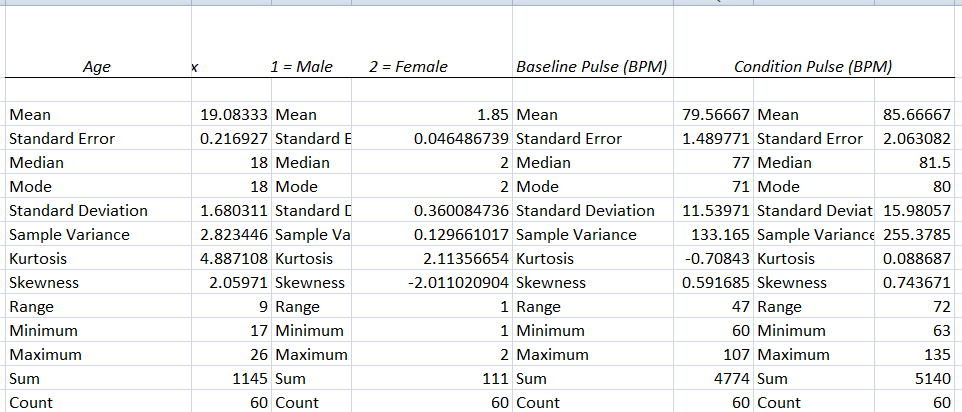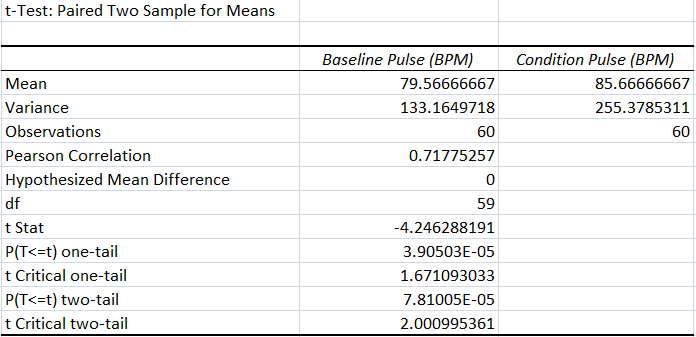Save flat 35% on Assignment
Read this academic research paper example & explore New Assignment Help USA's full range of academic writing services designed just for you—because great work deserves the perfect partner. Flip the page and let’s make it happen!
Stress has been found as a ubiquitous aspect of human experience. Stress has profound implication in the context of psychological distress. The standard methodology has been used in order to conduct or perform the TSST in the perspective of public speaking. The public speaking and the mental arithmetic task have been involved in the task. Furthermore, it is designed to activate the hypothalamic-pituitary-adrenal (HPA) axis. Its efficacy in inducing acute stress is well-documented. Furthermore, it has been developed as a popular choice in experimental settings. Trier Social Stress Test (TSST) has long been considered a standard procedure in psychological and criminological research aimed to stimulate stress levels in experimental settings (Pfeifer et al., 2021). As a result, it generates HPA axis activation effectively yielding the acute stress response accurate measures. Further, the actual roll-out of TSST encounters a great number of difficulties. On the one hand, it needs a jury of confederates; that is, it takes too much time and work force in terms of resources. Second, the establishment of TSST is like having a box in one hand and using the other hand to place it aside while fetching another box from somewhere else (Chen and Nowak, 2023). Finally, and indeed most importantly, the TSST can be a very unpleasant experience for participants, thus calling into question the ethics surrounding participant well-being and psychological distress from that exposure.
The TSST requires the presence of a panel of evaluators to administer the test that has been including both an interview and a mental arithmetic task (Narvaez Linares et al., 2020). This setup demands significant resources in terms of personnel, time, and logistical arrangements. That has been requirements limit the scalability and feasibility of the TSST. Furthermore, limited resources have been found in the context of the scalability and the feasibility mode. The TSST is known to induce a considerable level of stress in participants (Almazrouei, Morgan and Dror, 2022).
Given it will be testing for an alternative to TSST, the design of this study would probably be a within-subject experimental, which means that they would not deviate from their baseline setting and basically not testified twice. This enables direct comparison of physiological reactions (pulse rates) to the NST when compared with their respective resting states.
The study involved 61 participants, selected to ensure a diverse representation in terms of age, gender, and background. The participants of the experimental part were undergraduate students interns who participated in that particular week 5 of the course. The sample consisted of males (type one) and females (type two), in the age limits 17-26 years. Another representative of the data set is the baseline pulse rate and pulse rates under stress not-non-specifically stimulated test (NSST), that, in its turn , poses a reflection putting an index to nonspecific tension identifiable answer.
All participants provided informed consent prior to their involvement in the study. Ethical approval for the study was obtained from the university ensuring compliance with ethical standards for research involving human subjects (Wu et al., 2019). Participants were informed about the nature of the study, their right to withdraw at any point, and measures taken to ensure their privacy and data confidentiality.
Prior to the experiment, participants were briefed about the procedure and what to expect during the test. They were also given instructions on how to report their stress levels and any discomfort experienced during the test.
Descriptive statistics has been helping in the promotion of mean, median. Kurtosis, skewness and other attributes will followed. Therefore, through the method related to the pared T test will also be adopted in this research and it will help in the enhancement of different relationship between baseline pulse and condition pulse has been identified and it will also identified that through the process related to paired test, different result relation can be identifed.

Baseline Pulse (BPM):
Condition Pulse (BPM):
Thus, the results of the data suggest that pulse rate significantly increased at adjustment from baseline, to condition, reflecting an induced physiological stress response. The difference in the magnitude of variability for pulse rates during condition indicates that individuals responded differently to a stressor, and this is one of the characteristic properties that are described while investigating stress responsesnd also by sex when analysing whether there is significant difference between genders (Zubair and Yoon, 2020).

The result from the statistical analysis of the paired two-sample t test between the baseline conditions and a stressful condition in this instance demonstrates that there was significantly different resting pulse rates among participants under various situations. The stress condition variance (255.38) was also significantly higher than the baseline variance (133.16), thus implying a more widespread variation in rates when the participating individuals were subjected to stress. The Pearson correlation coefficient, with a sample size of 60 participants was found to be 0.72 in individuals who demonstrated strong positive relationships between baseline and condition-induced pulse rate elevations.
The calculated t-statistic of − 4.25 and two-tailed p – value equal to 0.000781 clearly show that in comparison with baseline the pulse rate is significantly increased as a result of condition. For this p-value is below the conventional alpha of 0.05 which implies that it is sufficiently low knowing that v = 59 degrees of freedom as illustrated above. Given that the test is two tailed, it’s more critical value of 2.0 and an observed t-statistic that exceeds this limit clearly implies a rejection of the null hypothesis at a level of significance in our population. The findings attest to the fact that such a condition provoked physiological reaction, as what is evident from dramatic increase of pulse rate in the subjects was statistically significant. The results provide some support for the assumption that the stress manipulation allowed to observe quantifiable alteration in physiological arousal.
The statistical analyses of the experimental data offer compelling evidence supporting the new stress test method as a potentially valid alternative to the Trier Social Stress Test (TSST) (Vors, Marqueste and Mascret, 2018).
From the empirical data, paired-sample t test for the NSST, revealed significant changes from a baseline pulse rate to the condition achieved one minute after exposure. This implies that the NSST has contrived to induce physiological stress mechanisms, just as is done by the much long-standing Trier Social Stress Test (TSST).
The concrete applications of such findings have a critical magnitude (Nedeljkovi? et al., 2021). First, the possibility that NSST can produce equivalent states of stress with a lower degree of complexity and presumably with lower cost and in an easier manner compared to its traditional counterpart could pave new research paths into acute laboratory-induced stress. In the real-world applications, this may lead to more avenues of stress research tools available to institutions with meager resources and coincidentally a deviation in eventual research output (Nedeljkovi? et al., 2021).
Additionally, the study protocol now seems to support and reinforce the ethical dimension of the NSSTs. Adopting the assumption that the NSST design is claimed to be less intense and more user-friendly condensed variation of TSST may lift some of the ethical problems with participants’ discomfort and psychological risk outcomes. Besides, it would make the research conduct consistent with ethical principles that may also contribute to better degree of compliance among participants and improve data quality. The potential that will be applied to the NSST is beyond measure. A non-invasive and less stressful stress test can be used in the clinical environment as if it can assess a suitable measure of the stress response. The NSST could therefore be employed in workplace settings to appraise job stress within the perspective of minimizing undue anxiety while evaluating stress among employees.
Nevertheless, a number of constraints related to the study have to be pointed out. In the sample taken, students from undergraduate level were only included; perhaps this is not a representative selection of the general populace. The potential for a novelty effect should also be considered: Coherence Responding to the NSST might have been impaired by the novelty of the measure, which could erode over time or with repeated use (Feinstein, 2022). However, more studies should also be conducted to confirm the NSST across various population and locations. However, further subsequent scientific studies should aim to impose these results and to investigate the subjective reality of participants recruited through NSST. This certainly might include a qualitative data set to further the shallow quantitative approaches of stress response.
It can be concluded that the study has been demonstrating the innovative social stress and through which the viable and ethical alternative can be establish through the TSST. Furthermore, it is also to be stated that statistical relation has also be promoted the method related to the significant increase in the pulse through which the resource demand and intensity has been identified. On the other hand, it is also identified that the diversity in the research subjects have also been creating different kinds of issues related to the stress research.
Almazrouei, M.A., Morgan, R.M. and Dror, I.E. (2022). A method to induce stress in human subjects in online research environments. Behavior Research Methods. [online] doi:https://doi.org/10.3758/s13428-022-01915-3.
Bos, J. (2020). Research Ethics Step by Step. Research Ethics for Students in the Social Sciences, [online] pp.227–273. doi:https://doi.org/10.1007/978-3-030-48415-6_10.
Chen, F.R. and Nowak, M.K. (2023). The role of arousal and stress physiological responses in the pathway from strains to violent and non-violent antisocial behavior. Personality and Individual Differences, 200(4), p.111879. doi:https://doi.org/10.1016/j.paid.2022.111879.
Feinstein, A. (2022). Mind, Mood, and Memory: The Neurobehavioral Consequences of Multiple Sclerosis. [online] Google Books. JHU Press. Available at: https://books.google.com/books?hl=en&lr=&id=sfdSEAAAQBAJ&oi=fnd&pg=PT9&dq=Coherence+Responding+to+the+NSST+might+have+been+impaired+by+the+novelty+of+the+measure [Accessed 30 Jan. 2024].
Kirk, U. and Axelsen, J.L. (2020). Heart rate variability is enhanced during mindfulness practice: A randomized controlled trial involving a 10-day online-based mindfulness intervention. PLOS ONE, 15(12), p.e0243488. doi:https://doi.org/10.1371/journal.pone.0243488.
Mohammadi, A., Emamgoli, A., Shirinkalam, M., Meftahi, G.H., Yagoobi, K. and Hatef, B. (2019). The persistent effect of acute psychosocial stress on heart rate variability. The Egyptian Heart Journal, 71(1). doi:https://doi.org/10.1186/s43044-019-0009-z.
Narvaez Linares, N.F., Charron, V., Ouimet, A.J., Labelle, P.R. and Plamondon, H. (2020). A systematic review of the Trier Social Stress Test methodology: Issues in promoting study comparison and replicable research. Neurobiology of Stress, 13, p.100235. doi:https://doi.org/10.1016/j.ynstr.2020.100235.
Nedeljkovi?, M., Visser, J., Šavija, B., Valcke, S. and Schlangen, E. (2021). Use of fine recycled concrete aggregates in concrete: A critical review. Journal of Building Engineering, 38(2), p.102196. doi:https://doi.org/10.1016/j.jobe.2021.102196.
Pfeifer, L.S., Heyers, K., Ocklenburg, S. and Wolf, O.T. (2021). Stress research during the COVID-19 pandemic and beyond. Neuroscience & Biobehavioral Reviews, [online] 131(2), pp.581–596. doi:https://doi.org/10.1016/j.neubiorev.2021.09.045.
Rodak, K., Kokot, I. and Kratz, E.M. (2021). Caffeine as a Factor Influencing the Functioning of the Human Body—Friend or Foe? Nutrients, [online] 13(9), p.3088. doi:https://doi.org/10.3390/nu13093088.
Toussaint, L., Nguyen, Q.A., Roettger, C., Dixon, K., Offenbächer, M., Kohls, N., Hirsch, J. and Sirois, F. (2021). Effectiveness of Progressive Muscle Relaxation, Deep Breathing, and Guided Imagery in Promoting Psychological and Physiological States of Relaxation. Evidence-Based Complementary and Alternative Medicine, [online] 2021(1), pp.1–8. doi:https://doi.org/10.1155/2021/5924040.
Vors, O., Marqueste, T. and Mascret, N. (2018). The Trier Social Stress Test and the Trier Social Stress Test for groups: Qualitative investigations. PLOS ONE, 13(4), p.e0195722. doi:https://doi.org/10.1371/journal.pone.0195722.
Wu, Y., Howarth, M., Zhou, C., Hu, M. and Cong, W. (2019). Reporting of Ethical Approval and Informed Consent in Clinical Research Published in Leading Nursing journals: a Retrospective Observational Study. BMC Medical Ethics, [online] 20(1), pp.1–10. doi:https://doi.org/10.1186/s12910-019-0431-5.
Zubair, M. and Yoon, C. (2020). Multilevel mental stress detection using ultra-short pulse rate variability series. Biomedical Signal Processing and Control, 57(2), p.101736. doi:https://doi.org/10.1016/j.bspc.2019.101736.
